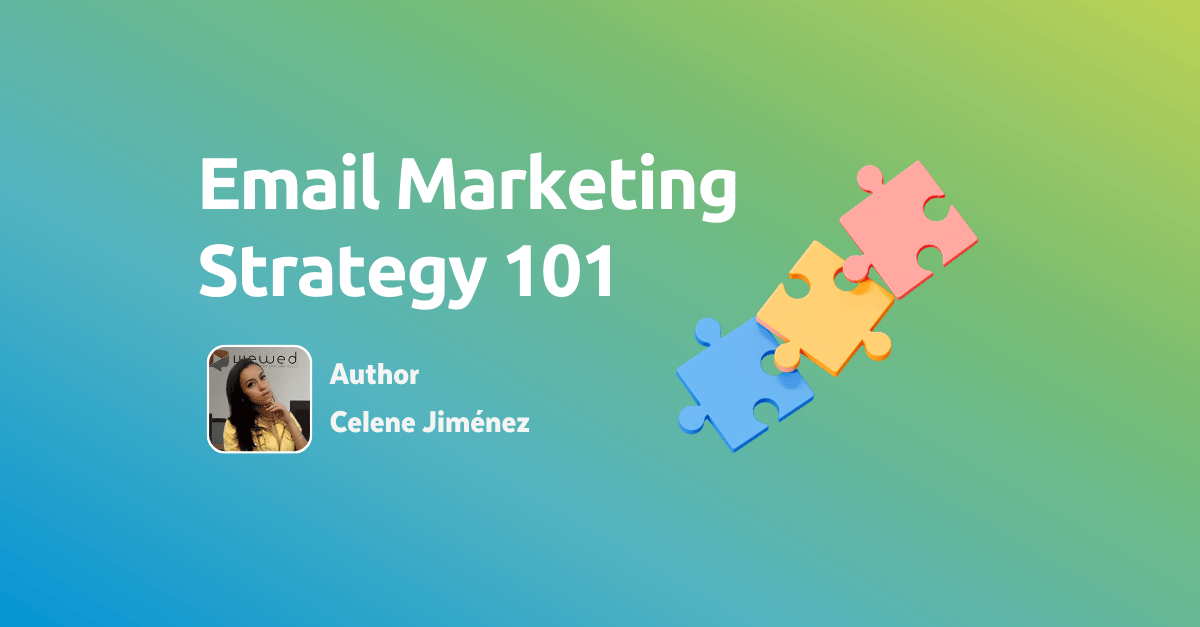Email marketing continues to be one of the most effective strategies for businesses to engage with their audience and drive conversions. Crafting high-converting email marketing campaigns requires a combination of strategic planning, compelling content, and an understanding of your audience's needs. In this guide, we will explore essential steps and best practices for developing successful email marketing campaigns that resonate with your subscribers and boost your conversion rates.
1. Define Your Goals
Defining clear objectives is a crucial step in developing successful email marketing campaigns. Before creating any content, it’s essential to ask yourself what you want to achieve. Here are some aspects to consider when establishing your goals:
Set SMART Goals
Use the SMART framework (Specific, Measurable, Achievable, Relevant, and Time-bound) to define your goals. This will not only help you be clearer about what you want to achieve but also make it easier to measure the success of your campaigns.
- Specific: Instead of a general goal like "increase sales," specify how much you want to increase sales and over what period of time, for example, "increase sales by 15% over the next quarter."
- Measurable: Ensure that you can measure progress toward your goals. You can use metrics such as open rates, click-through rates, or conversion rates to evaluate your campaigns' performance.
- Achievable: Consider the feasibility of your goals. Set challenging yet attainable goals based on your previous campaign history and market analysis.
- Relevant: Make sure your goals align with your overall business objectives. If your company is focused on increasing customer retention, you may want to concentrate on objectives related to loyalty and customer satisfaction.
- Time-bound: Define a timeline for achieving your goals. This will not only help you stay focused but also create a sense of urgency that can motivate your team.
Examples of Common Goals
Here are some specific goal examples you might consider:
-
Increase Open Rate: One goal could be to increase your email open rate by 20% over the next three months. This may involve optimizing subject lines and sending emails at strategic times.
-
Boost Click-Through Rate: If your campaign includes a link to a product or service, you might set a goal to increase the click-through rate by 10% by improving the content and including more attractive CTAs.
-
Generate More Sales: You can set a goal to generate a specific number of sales through an email campaign, such as "generate 200 direct sales through the upcoming email promotion within one month.
2. Understand Your Audience
To create emails that convert, it’s essential to have a deep understanding of your target audience. This understanding forms the backbone of effective email marketing and can significantly influence your campaign's success. Here are several key strategies to help you better understand your audience:
Analyze Preferences and Behaviors
Start by gathering data about your subscribers' preferences and behaviors. This information can be obtained through various methods, including:
-
Surveys and Feedback: Send out surveys to your email list asking for feedback on your content, products, and services. This can help you gain insights into what your audience values and what changes they might appreciate.
-
Website Analytics: Utilize tools like Google Analytics to track how users interact with your website. Analyze which pages they visit, how long they stay, and what actions they take. This information can help you understand what topics or products resonate with your audience.
-
Engagement Metrics: Monitor engagement metrics from previous email campaigns, such as open rates, click-through rates, and conversion rates. Identify trends and patterns that indicate what types of content your audience finds most compelling.
Identify Pain Points
Understanding the challenges and pain points your audience faces is crucial for creating relevant content. Consider these methods to identify these issues:
-
Customer Support Interactions: Analyze common questions and concerns raised by customers through support channels. This information can highlight areas where your audience may need guidance or support.
-
Social Media Monitoring: Observe conversations on social media platforms related to your industry. Look for complaints, questions, or topics that generate significant discussion. This can help you identify common pain points and interests.
Segment Your Audience
Once you have a clearer picture of your audience, segment them based on various criteria to ensure your messaging is tailored and relevant. Common segmentation methods include:
-
Demographics: Group your audience by age, gender, location, or income level. This can help you customize your content to appeal to different demographic segments.
-
Interests and Preferences: Create segments based on specific interests, such as product categories or topics your audience has shown interest in. This allows you to send targeted content that speaks directly to their needs.
-
Past Interactions: Analyze how your subscribers have interacted with your previous campaigns. Segment them based on their engagement levels, such as frequent openers, occasional readers, or inactive subscribers. This information can help you craft tailored messages that encourage further engagement.
Personalize Your Messaging
Personalization is more than just including a recipient's name in the email. It involves delivering content that is genuinely relevant to the recipient's needs and preferences. Here are some strategies for effective personalization:
-
Dynamic Content: Use dynamic content blocks in your emails to display different information based on the recipient's preferences or behavior. For example, if a subscriber has shown interest in a specific product category, highlight relevant products or offers in their emails.
-
Targeted Recommendations: Based on past purchases or browsing behavior, provide personalized product recommendations. This not only adds value to the email but also increases the likelihood of conversion.
Enhance the Customer Journey
Understanding your audience allows you to enhance their experience along the customer journey. By delivering relevant content at each stage, from awareness to consideration to purchase, you can guide them smoothly through their decision-making process. Consider these touchpoints:
-
Welcome Series: For new subscribers, create a welcome series that introduces them to your brand and offers valuable content tailored to their interests.
-
Nurture Campaigns: For leads who haven’t yet converted, develop nurture campaigns that provide useful information, address pain points, and gradually guide them toward a purchase.
-
Re-Engagement Campaigns: For inactive subscribers, design campaigns aimed at reigniting their interest. Offer special promotions, surveys, or personalized content to draw them back in.
By investing time and effort in understanding your audience, you can craft emails that resonate deeply, foster meaningful connections, and ultimately lead to higher conversion rates. Tailoring your messaging based on insights about preferences, behaviors, and pain points will make your emails not only more relevant but also more appealing, significantly enhancing your email marketing efforts.
3. Craft Compelling Subject Lines
Your subject line serves as the first impression of your email, acting as the gatekeeper to your content. A well-crafted subject line is crucial, as it can significantly influence your email’s open rates and overall success. Here are some key strategies to enhance your subject lines:
Be Concise and Clear
Aim for clarity and brevity in your subject lines. Generally, subject lines should be between 6 to 10 words to ensure they are easily readable on various devices, especially mobile phones. A concise subject line helps your audience quickly grasp the email's purpose, increasing the likelihood of them opening it.
Use Engaging Language
Incorporate engaging and action-oriented language that encourages recipients to take action. Words like "discover," "unlock," "join," or "explore" can create a sense of urgency and excitement. For instance, instead of using a generic subject line like "New Arrivals," consider something more enticing, such as "Discover Our Latest Arrivals – Just for You!"
Pose Questions
Asking a question in your subject line can spark curiosity and prompt recipients to open the email. Questions engage the reader’s mind, encouraging them to find out more. For example, instead of "New Features Available," try "Are You Ready to Transform Your Experience with Our New Features?"
Personalization
Personalizing your subject lines can make them more relevant to individual recipients. Including the recipient's name or referencing their past interactions can significantly improve open rates. For instance, "John, Your Exclusive Offer Awaits!" creates a personal connection that encourages engagement.
A/B Testing
Regularly testing different subject lines is essential for optimizing your email marketing strategy. A/B testing allows you to compare the performance of two or more subject lines to see which one resonates better with your audience. This data-driven approach enables you to refine your subject lines based on real feedback and continuously improve your open rates.
By investing time in crafting compelling subject lines, you can significantly enhance your email marketing campaigns' effectiveness. A well-written subject line not only captures attention but also sets the stage for the rest of your email content, ultimately driving higher engagement and conversions.
4. Create Engaging Content
Once your email is opened, the content needs to captivate your audience. Use a clear, conversational tone and focus on providing value. Incorporate storytelling elements and highlight benefits rather than just features. Including eye-catching visuals and concise text can enhance engagement. Don’t forget to include email marketing examples to illustrate your points and make your content more relatable.
5. Optimize for Mobile
With the increasing use of mobile devices, ensuring your emails are mobile-friendly is vital. Use responsive design to ensure your emails look great on any screen size. Test your emails across various devices and email clients to ensure compatibility. A seamless mobile experience can greatly enhance user engagement and lead to higher conversion rates.
6. Implement Strong Calls to Action (CTAs)
A clear and compelling call to action is essential for guiding your readers towards your desired outcome. Make your CTAs prominent and persuasive. Use action verbs and create a sense of urgency, such as "Shop Now" or "Limited Time Offer!" Experiment with different placements and designs to determine what works best for your audience.
7. Utilize Email Marketing Tools
Leverage email marketing tools to streamline your campaigns and improve efficiency. These tools can help with list management, automation, and analytics. By automating routine tasks and analyzing performance metrics, you can focus on crafting compelling content and optimizing your strategies for better results.
8. Follow Best Practices for Deliverability
Ensure your emails reach your audience's inbox by following best practices related to deliverability. This includes verifying your sender reputation, maintaining a clean email list, and adhering to antispam regulations. Avoid using spammy words and phrases in your content to improve your chances of landing in the inbox instead of the spam folder.
9. Test and Analyze Your Campaigns
Continuous improvement is key to successful email marketing. Use A/B testing to experiment with different subject lines, content formats, and CTAs. Analyzing the results of these tests will provide insights into what resonates best with your audience. Regularly reviewing your campaign performance will help you refine your approach and implement more effective email marketing techniques over time.
Conclusion
Developing high-converting email marketing campaigns is an ongoing process that requires strategic planning, audience understanding, and continuous optimization. By following these steps and incorporating effective email marketing practices, you can create campaigns that not only engage your audience but also drive conversions. Remember, the key to successful email marketing lies in delivering value and building meaningful relationships with your subscribers. Start implementing these strategies today, and watch your email marketing efforts yield impressive results!




